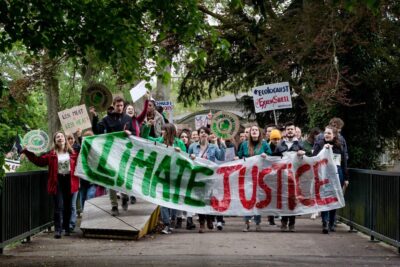3 things we learned from our focus group of campus sustainability leaders
February 16, 2024, By Maya Graham, Strategic Leader, Research
In the fall of 2023, EAB held our final series of Sustainability Focus Group sessions for senior sustainability and facilities officers. With over 20+ colleges and universities participating collectively, we discussed the major priorities dominating the sustainability space: metrics and data, funding, and engaging stakeholders. To shed light on how sustainability leaders are thinking about these priorities, we’ve outlined the three key findings from our focus group conversations.
1. Sustainability leaders need guidance on how to use metrics and data
First, leaders find it challenging to wrangle data, especially when deciding what information is most important to capture and which platform is the best fit to display that information. To navigate that burden, our focus group participants highlighted the importance of nailing down clear sustainability goals, which help serve as a roadmap for what data matters most. Naturally, deciding how much data to collect—or how little—can be overwhelming, so starting with goals provides more structure and strategy to the process.
Sustainability leaders can prepare brief data reports for senior leaders to increase accountability and demonstrate the progress that has been made over time. Reliable data can directly impact success by educating stakeholders and securing funding. Data visualization tools that are actively updated, like dashboards and scorecards, will also allow for greater transparency in the journey to increased campus sustainability.
Need help presenting sustainability data? Explore our Roadmap for steps to create a compelling dashboard.
2. Educating senior stakeholders about sustainability is key for funding
Participants discussed how stakeholder education and engagement are very closely tied to funding and the ability to support sustainability objectives. They found that educating the campus community can positively impact the number of dollars allocated to sustainable projects.
When advocating for budget support, there is huge value in senior administrators understanding why sustainable projects are important for the institution and how they align with the university’s overall strategic goals. One institution shared their experience hosting a seminar for senior leaders on reducing the carbon footprint, which helped them successfully secure the support needed to move forward with their proposed initiative.
Across the board, budgets are getting tighter and tighter as administrators are working to figure out how to do more with less. In this environment, sustainability teams must demystify the notion that sustainable practices are more costly; educating stakeholders on how sustainability practices will actually reduce costs over time will greatly help in winning dollars for current and future projects.
For guidance on how to craft impactful sustainability action plans, check out our research report.
3. Faculty members, students, and other divisions can help advocate for sustainability
A common theme we heard during our focus group sessions was that sustainability leaders often worked directly with faculty on sustainability initiatives. Faculty members can help incorporate sustainable policies and goals into the curriculum that help accelerate additional funding and education opportunities.
Many facilities leaders have also found that students are some of the greatest advocates for sustainability. There’s a natural opportunity to utilize students as sustainability educators, and as a result, they help to alleviate the sole responsibility that facilities leaders often face to tell the story of why this work is so vital.
More strategies facilities leaders are working on with other campus divisions to help meet funding goals include:
- Implementing policies for power-purchasing agreements
- Approving (or not approving) capital funding projects that meet sustainable criteria
- Working with development divisions
Overall, leaders shared that building relationships with other departments and incorporating them into the strategic planning process can positively impact funding and stakeholder engagement.
Interested in more insights? Discover more takeaways from our work with sustainability leaders.
Keep pace with growing sustainability strategies
As institutions work through their sustainability planning and stakeholder education, EAB wants to serve as a resource for best practices. Ready to get started? Check out our Sustainability Plan Review to garner feedback on your sustainability strategies and align your goals with what we are seeing in the field.

More Blogs

Campus facilities operations are approaching a fundamental shift

Creating and implementing sustainability and climate action plans
